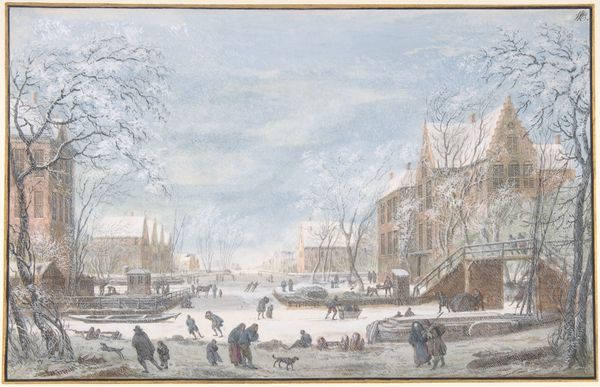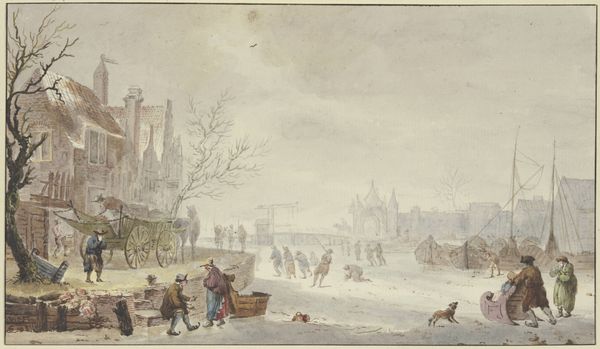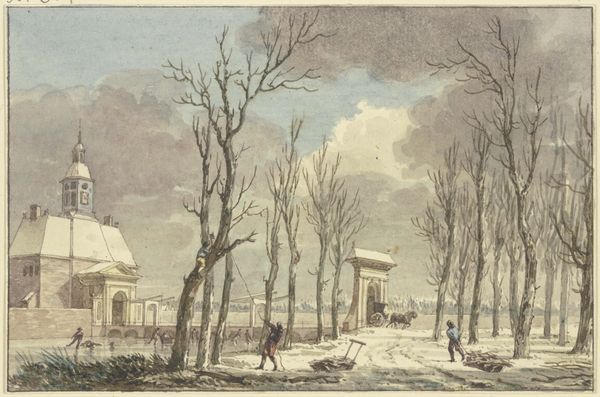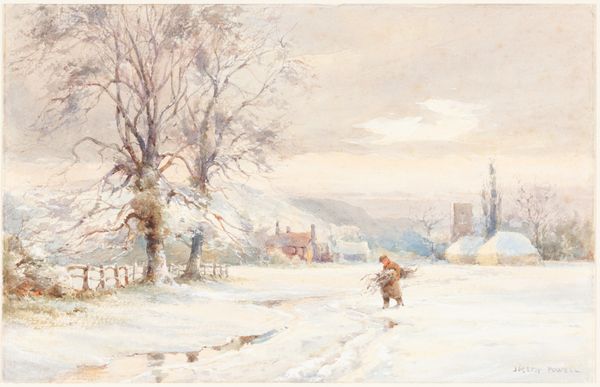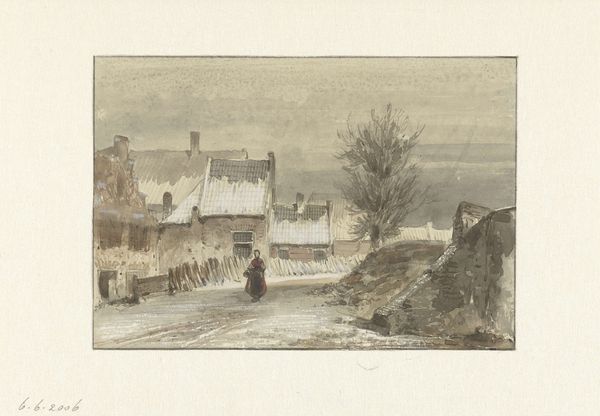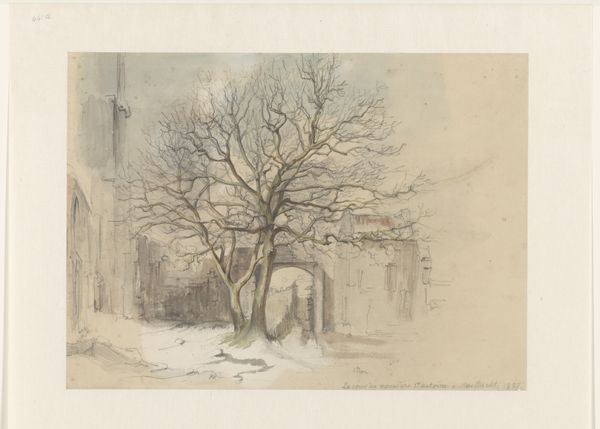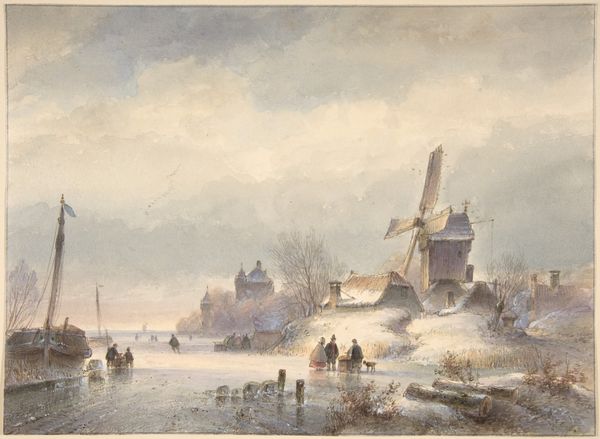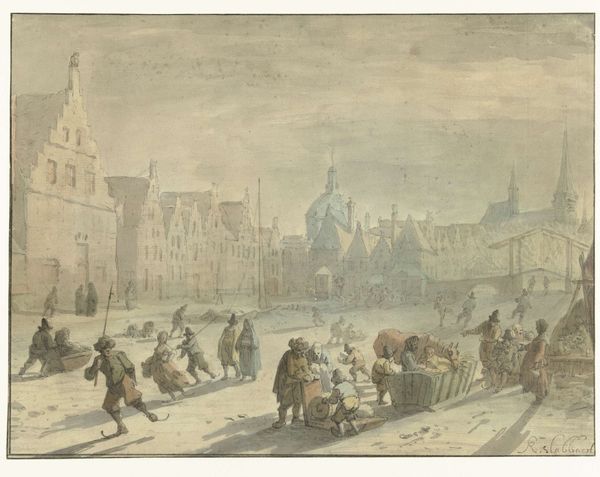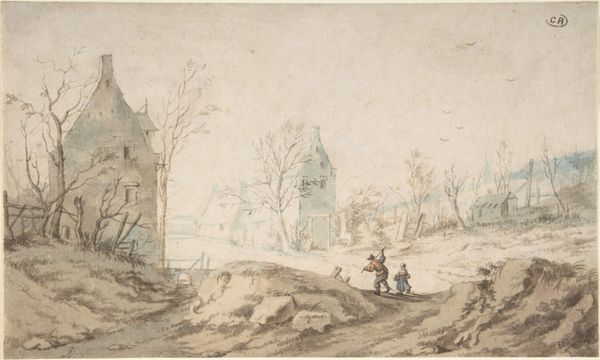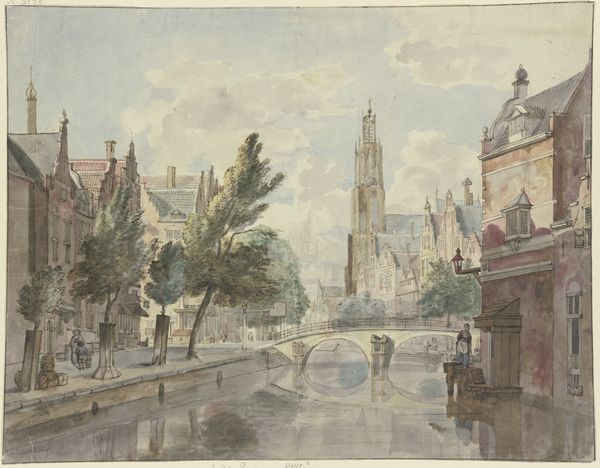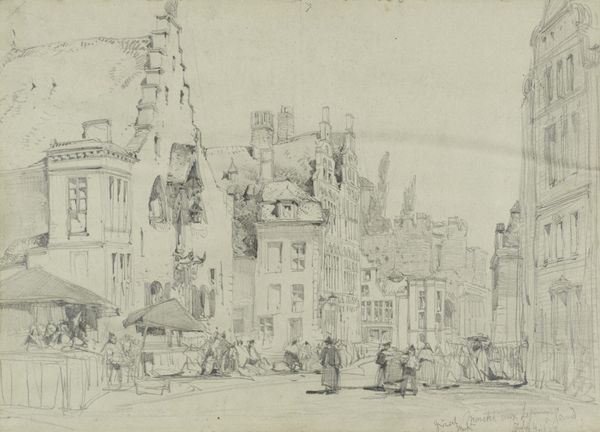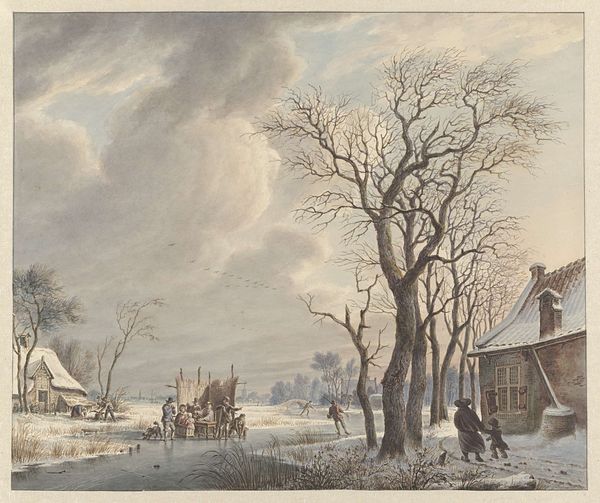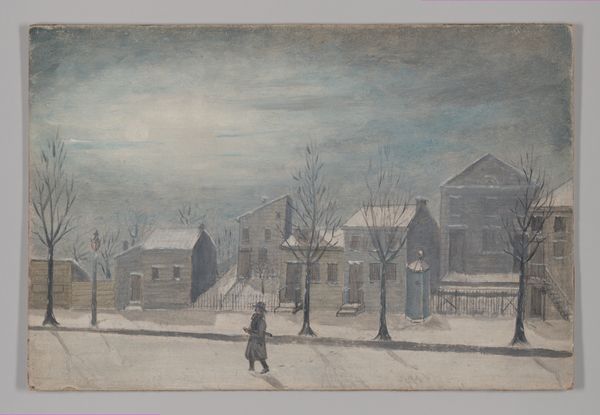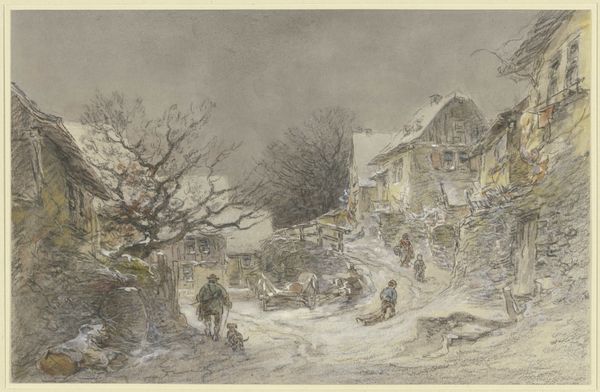
Schlittschuhläufer auf einer Gracht in Amsterdam 1832
0:00
0:00
drawing, painting, gouache, watercolor
#
drawing
#
16_19th-century
#
dutch-golden-age
#
painting
#
gouache
#
landscape
#
oil painting
#
watercolor
#
romanticism
#
cityscape
#
genre-painting
#
watercolor
Copyright: Public Domain
Curator: Looking at "Skaters on a Canal in Amsterdam," created around 1832 by Bartholomeus Johannes van Hove, currently held at the Städel Museum, what's the first thing that grabs your attention? Editor: That cold light! It just washes over everything, making you feel the chill right down to your bones. All that pale blue and grey... it’s quite arresting, but also a little melancholy. Curator: Yes, exactly. The pale blues create this sense of frozen light. Considering it’s a depiction of everyday life – people skating on a canal – it taps into something deeper than just a genre scene, doesn't it? Winter has many meanings. It is associated with isolation, mourning, and the death of the growing season in cultures from many traditions, isn’t it? Editor: Definitely, but it's not bleak exactly. There’s life in it too, that bustle around the bridge gives the painting its vitality. Curator: Right, the frozen canal becomes this communal stage. Notice how van Hove employs delicate washes of gouache and watercolor to capture not only the architectural details, but the very air of the scene. These kinds of cityscapes reflect Dutch Golden Age and Romantic styles. The themes range from the joys of everyday life to grand architectural vistas. Editor: I keep coming back to those skaters. They appear so small and frail. Almost like emblems of human persistence in the face of the wintery landscape and conditions, but also time. Are they metaphors for our brief existence? Maybe. The architecture adds to the sense of grand cultural memory. Curator: That makes me think about Dutch art during that time, which served as this almost journalistic endeavor. A testament of existence! But also capturing fleeting moments against enduring architecture. Perhaps the juxtaposition of skaters and Gothic style architectures implies life cycles as opposed to one still moment in time. What a thought! Editor: It’s a beautiful tension to consider—the impermanence of those figures versus the imposing nature of their environment. Each adds to the richness of the visual experience. Curator: Exactly, I love how it resonates differently, depending on where your mind wanders when looking at it! Editor: Absolutely, a picture speaking a thousand, frozen words, inviting countless reflections on memory and mortality.
Comments
No comments
Be the first to comment and join the conversation on the ultimate creative platform.
